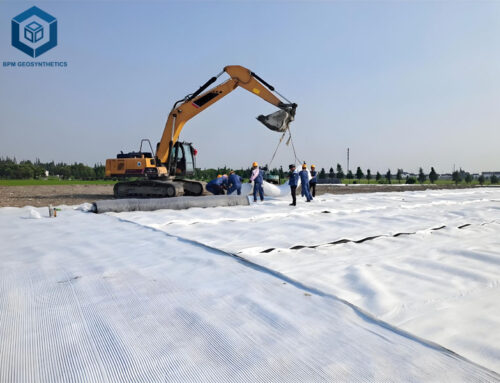Nonwoven geotextile fabrics are widely used in civil engineering, construction, and environmental projects due to their versatility, cost-effectiveness, and ease of installation. These BPM fabrics are made from synthetic fibers such as polypropylene or polyester, which are bonded together through mechanical, thermal, or chemical processes. Nonwoven geotextiles are commonly used for filtration, drainage, separation, and reinforcement in various applications, including road construction, erosion control, and landfill liners.
Despite their numerous advantages, nonwoven geotextile fabrics are not without their drawbacks. This article explores the disadvantages of nonwoven geotextile fabric, examining their limitations in terms of durability, environmental impact, performance under specific conditions, and cost considerations. By understanding these disadvantages, engineers and project managers can make more informed decisions when selecting geotextile materials for their projects.
1. Disadvantages of Nonwoven Geotextile Fabric – Limited Durability and Longevity
1.1 Disadvantages of Nonwoven Geotextile Fabric – Susceptibility to UV Degradation
One of the primary disadvantages of nonwoven geotextile fabrics is their susceptibility to ultraviolet (UV) degradation. When exposed to sunlight for extended periods, the synthetic fibers in nonwoven geotextiles can break down, leading to a loss of strength and integrity. This is particularly problematic in applications where the geotextile is exposed to the elements, such as in erosion control or temporary road stabilization.
To mitigate UV degradation, manufacturers often add UV stabilizers to the fabric during production. However, these stabilizers can only provide limited protection, and prolonged exposure to sunlight will eventually compromise the material’s performance. In some cases, additional protective measures, such as covering the geotextile with soil or other materials, may be necessary to extend its lifespan.
1.2 Disadvantages of Nonwoven Geotextile Fabric – Vulnerability to Chemical Attack
Nonwoven geotextile fabrics are also vulnerable to chemical attack, particularly from strong acids, alkalis, and oxidizing agents. In environments where the geotextile is exposed to aggressive chemicals, such as in industrial waste containment or chemical storage facilities, the fabric may degrade more rapidly than expected. This can lead to a loss of filtration, drainage, or separation capabilities, potentially compromising the overall performance of the project.
The chemical resistance of nonwoven geotextiles depends on the type of polymer used in their manufacture. For example, polypropylene geotextiles are generally more resistant to chemical attack than polyester geotextiles. However, even polypropylene fabrics can be affected by certain chemicals, and careful consideration must be given to the specific chemical environment when selecting a geotextile material.
1.3 Disadvantages of Nonwoven Geotextile Fabric – Mechanical Damage During Installation
Nonwoven geotextile fabrics are relatively lightweight and flexible, which makes them easy to handle and install. However, this also makes them more susceptible to mechanical damage during installation, particularly when placed over rough or uneven surfaces. Sharp rocks, debris, or heavy equipment can puncture or tear the fabric, reducing its effectiveness and potentially leading to project failures.
To minimize the risk of mechanical damage, it is essential to prepare the subgrade properly before installing the geotextile. This may involve removing sharp objects, leveling the surface, and using protective layers, such as sand or gravel, to cushion the fabric. Additionally, care must be taken when handling and placing the geotextile to avoid unnecessary stress or strain on the material.
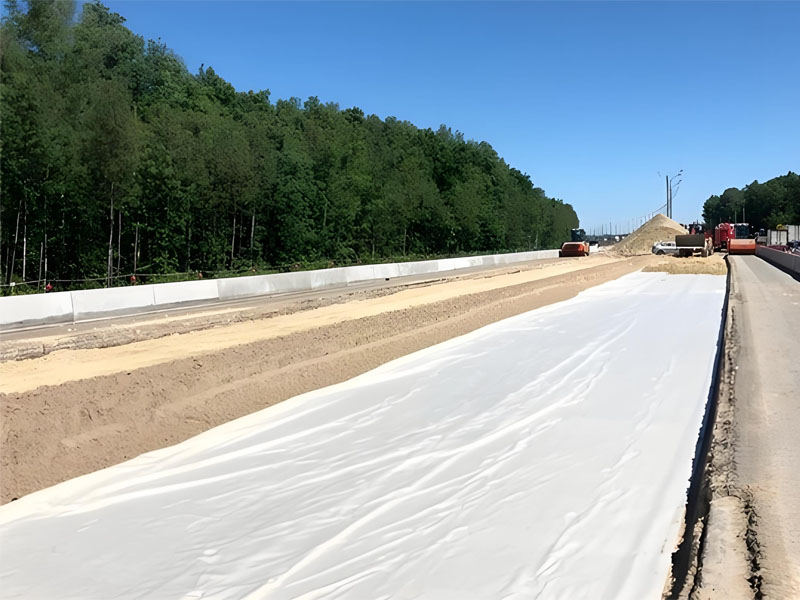
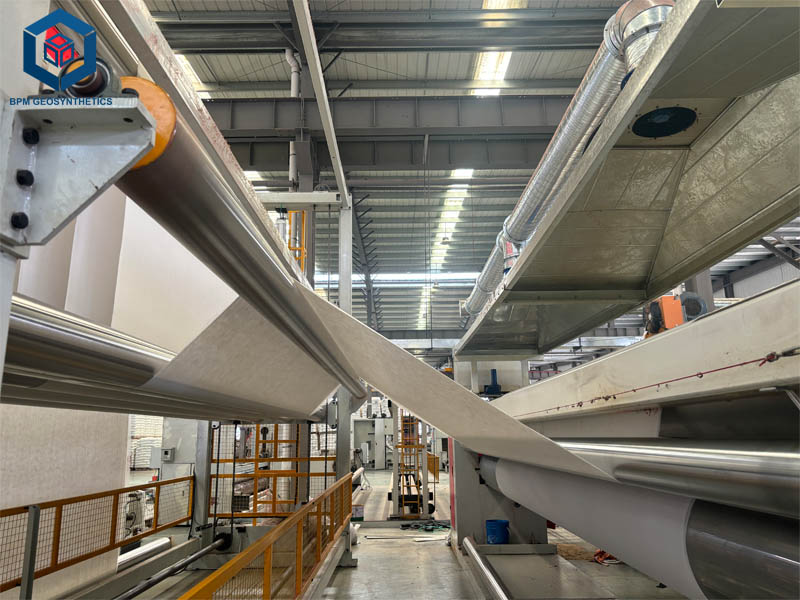
2. Disadvantages of Nonwoven Geotextile Fabric – Environmental Impact
2.1 Disadvantages of Nonwoven Geotextile Fabric – Non-Biodegradability
Nonwoven geotextile fabrics are made from synthetic polymers, which are not biodegradable. This means that once the geotextile reaches the end of its useful life, it will persist in the environment for hundreds of years, contributing to plastic pollution. In applications where the geotextile is buried, such as in road construction or landfill liners, this may not be an immediate concern. However, in applications where the geotextile is exposed or may be disturbed, such as in erosion control or temporary installations, the long-term environmental impact must be considered.
The non-biodegradability of nonwoven geotextiles also poses challenges for disposal. While some geotextiles can be recycled, the process is often complex and costly, and not all recycling facilities are equipped to handle these materials. As a result, many used geotextiles end up in landfills, where they contribute to the growing problem of plastic waste.
2.2 Disadvantages of Nonwoven Geotextile Fabric – Carbon Footprint
The production of nonwoven geotextile fabrics involves the use of fossil fuels, both as a raw material for the synthetic fibers and as an energy source for the manufacturing process. This results in a significant carbon footprint, contributing to greenhouse gas emissions and climate change. While the use of geotextiles can lead to environmental benefits, such as reduced soil erosion and improved water quality, these benefits must be weighed against the environmental costs of production and disposal.
Efforts are being made to reduce the carbon footprint of nonwoven geotextiles, such as using recycled materials or developing more energy-efficient manufacturing processes. However, these efforts are still in their early stages, and the overall environmental impact of nonwoven geotextiles remains a concern.
3. Disadvantages of Nonwoven Geotextile Fabric – Performance Limitations
3.1 Disadvantages of Nonwoven Geotextile Fabric – Limited Load-Bearing Capacity
Nonwoven geotextile fabrics are generally not suitable for applications that require high load-bearing capacity, such as in the construction of retaining walls or steep slopes. While they can provide some reinforcement, their strength is limited compared to woven geotextiles or other geosynthetic materials. In applications where significant loads are expected, additional reinforcement, such as geogrids or geocells, may be necessary to ensure the stability and longevity of the structure.
3.2 Disadvantages of Nonwoven Geotextile Fabric – Reduced Filtration Efficiency Over Time
Nonwoven geotextiles are commonly used for filtration applications, such as in drainage systems or around retaining walls. However, their filtration efficiency can decrease over time due to clogging or the accumulation of fine particles within the fabric. This can lead to reduced drainage capacity and increased hydrostatic pressure, potentially causing damage to the structure or surrounding soil.
To maintain filtration efficiency, it is essential to select a geotextile with the appropriate pore size and permeability for the specific application. Regular maintenance, such as cleaning or replacing the geotextile, may also be necessary to ensure long-term performance.
3.3 Disadvantages of Nonwoven Geotextile Fabric – Temperature Sensitivity
Nonwoven geotextile fabrics can be sensitive to temperature fluctuations, particularly in extreme environments. In cold climates, the fabric may become brittle and more susceptible to damage, while in hot climates, the fabric may soften and lose some of its structural integrity. This can affect the geotextile’s performance in applications such as road construction or erosion control, where temperature variations are common.
To address temperature sensitivity, it is important to select a geotextile material that is suitable for the specific environmental conditions. In some cases, additional protective measures, such as insulation or shading, may be necessary to protect the geotextile from extreme temperatures.
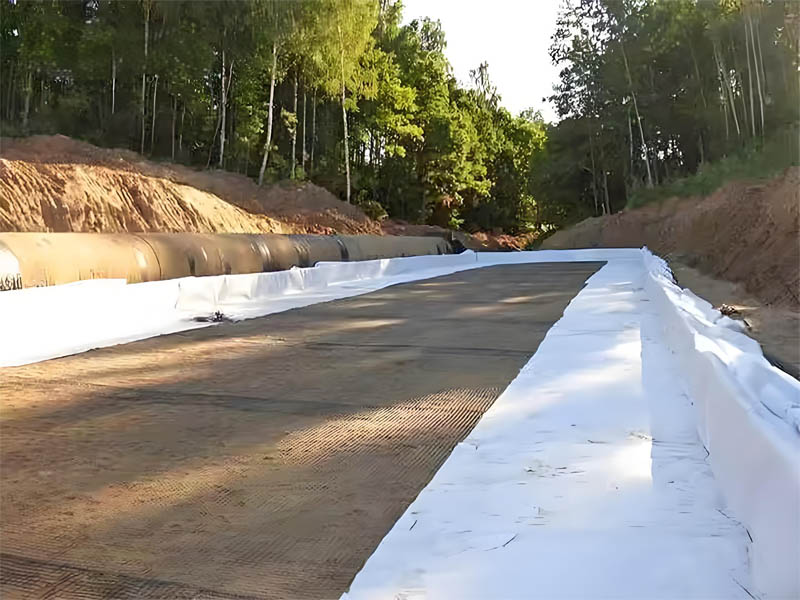
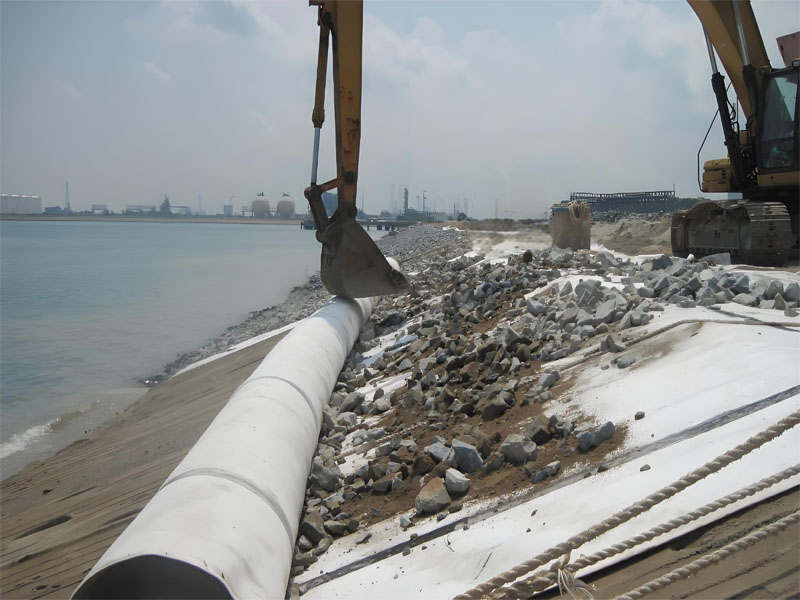
4. Cost Considerations
4.1 Initial Cost
While nonwoven geotextile fabrics are generally cost-effective compared to other geosynthetic materials, the initial cost can still be a significant consideration, particularly for large-scale projects. The cost of the geotextile itself, as well as the cost of installation, must be factored into the overall project budget. In some cases, the cost of additional protective measures, such as UV stabilizers or protective layers, may also need to be considered.
4.2 Long-Term Maintenance Costs
The long-term maintenance costs associated with nonwoven geotextile fabrics can also be a disadvantage. As discussed earlier, nonwoven geotextiles may require regular maintenance, such as cleaning or replacement, to maintain their performance. In applications where the geotextile is exposed to harsh environmental conditions, such as UV radiation or chemical exposure, the need for maintenance may be more frequent, leading to higher long-term costs.
Additionally, the non-biodegradability of nonwoven geotextiles means that disposal costs must also be considered. While some geotextiles can be recycled, the process is often costly and may not be available in all regions. As a result, many used geotextiles end up in landfills, where disposal costs can add up over time.
4.3 Cost of Failure
Finally, the cost of failure must be considered when using nonwoven geotextile fabrics. If the geotextile fails to perform as expected, the consequences can be significant, ranging from minor repairs to complete project failure. In some cases, the cost of failure may far exceed the initial cost of the geotextile, making it essential to carefully evaluate the material’s suitability for the specific application.
5. Conclusion
Nonwoven geotextile fabrics offer numerous advantages in terms of versatility, cost-effectiveness, and ease of installation. However, they are not without their disadvantages. The limitations in durability, environmental impact, performance under specific conditions, and cost considerations must be carefully evaluated when selecting a geotextile material for a project.
By understanding these disadvantages, engineers and project managers can make more informed decisions, ensuring that the chosen geotextile material is suitable for the specific application and environmental conditions. Additionally, ongoing research and development efforts are likely to address some of these disadvantages in the future, leading to more durable, environmentally friendly, and cost-effective geotextile materials.
In conclusion, while nonwoven geotextile fabrics are a valuable tool in civil engineering and construction, their limitations must be carefully considered to ensure the success and sustainability of any project.

